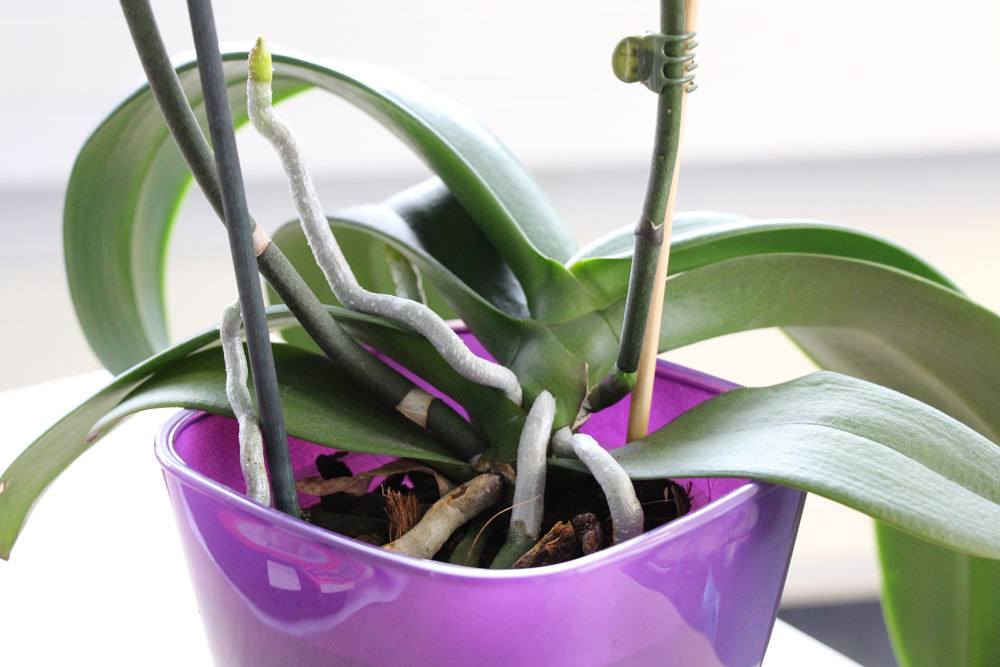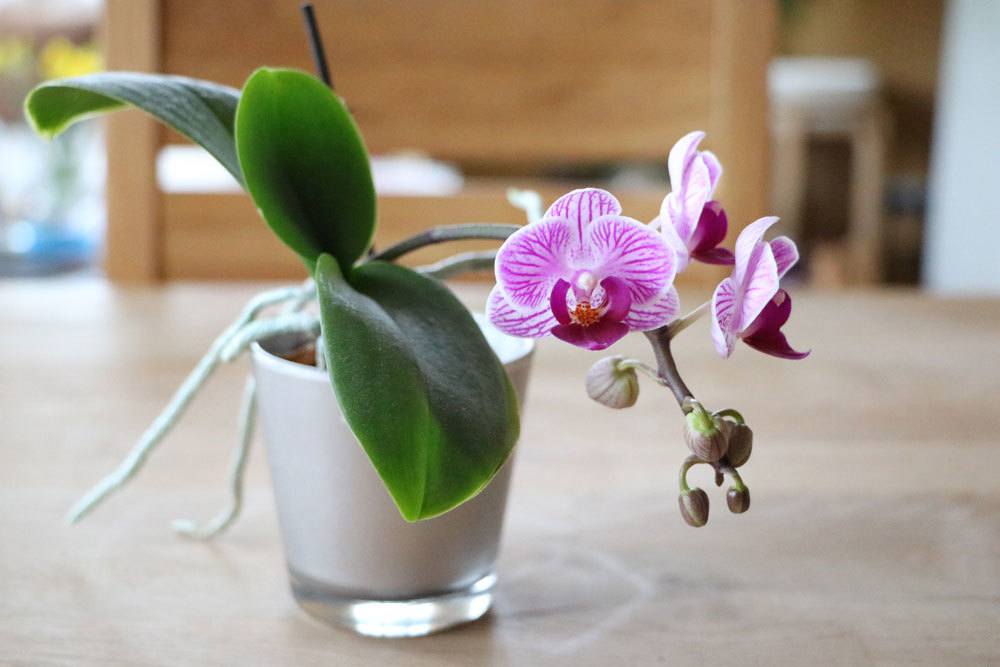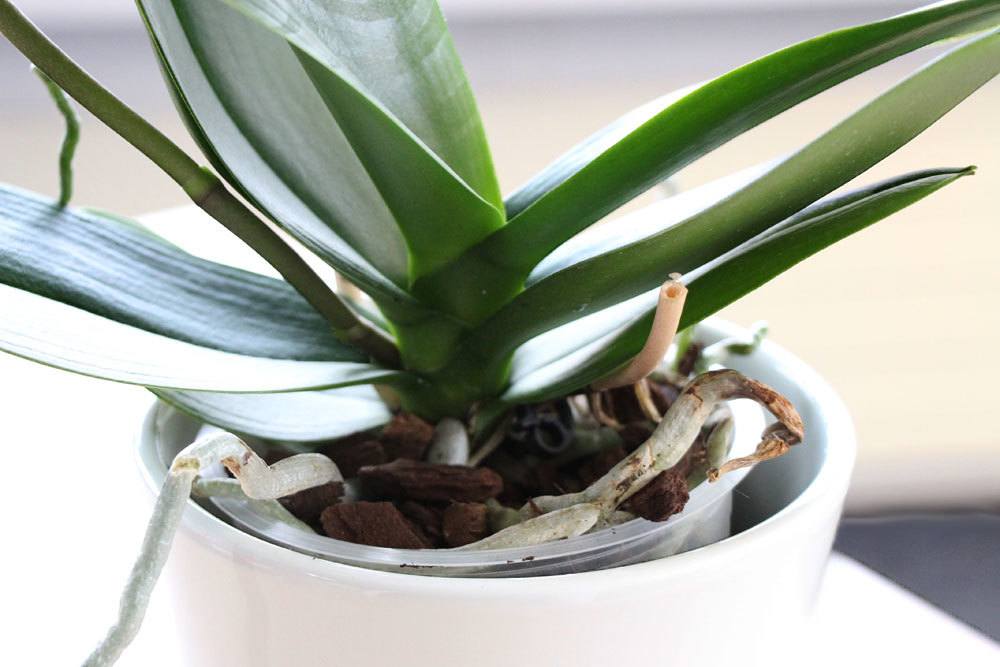If many aerial roots form on the illustrative orchid, then the question arises, cut off or not. However, the graceful plant is a perennial plant, which means that these aerial roots are also needed to thrive. However, these rarely look beautiful when countless roots already protrude from the tub. How to proceed here is explained in the following article
Aerial roots
Importance for the orchid
With many orchids, roots form above the soil in the pot, which then protrude over the edge. This is usually not a pretty sight and for the amateur gardener, the question then often arises whether the aerial roots may be removed or not. But the roots have a special significance for the high-maintenance plant, because these are to absorb nutrients and water from the air. Thus, the nature of the cells in the roots resembles a sponge, which not only absorbs water from the air, but also stores it.
Not all orchids have aerial roots, here it depends mainly on the species. Especially the Phalaenopsis orchids form a lot of aerial roots. However, it can also come to the formation of above-ground roots, if the supply via the roots located in the soil is not given and here too little nutrients and water are supplied. Then the care should be reconsidered, so that more roots do not form in the air.
The aerial roots often look very different:
- upward reaching
- downward reaching
- straining to the side
- formed into loops
- interlocked
Of course, this is often not a pretty picture when the aerial roots become almost larger than the actual plant. But the orchids can exist with these roots even without soil and grow in nature mostly on trees or shrubs. In addition to water and nutrient absorption, these roots also perform a supporting function. Thus, the plant can cling to twigs and branches and thus also has a stability in height.

Remove aerial roots?
Still experts on orchids argue about whether it is harmful to the plant or not, if the aerial roots are removed or at least reduced. Often older plants are equipped with a large amount of aerial roots, which can then also sensitively disturb the eye of the observer. In very extreme cases, the strands hang down so far that they already spread over the windowsill. But in one case the experts agree, unhealthy and dead aerial roots can be removed or shortened in any case. To find out which strands are still healthy, proceed as follows.
- spray aerial roots with water
- diseased or dead roots no longer turn green
- these can be removed without hesitation
- if healthy strands are also to be removed, thin them out only slightly
- never carry out an exaggerated pruning
- Thinning out should only be done on a few strands.
If too many healthy aerial roots are removed from an orchid, this may well result in the plant not being able to cope and dying, as the supply of nutrients is no longer given.
Procedure
If, however, various aerial roots are to be removed from a plant, even though this is not recommended, then great care must be taken. Above all, the cutting tool is important so that the graceful and high-maintenance orchid is not damaged. This should therefore be very sharp so that no frayed edges occur on the remaining root pieces. Bacteria and fungi can then get into the plant more easily here and damage it altogether. The tool should also be disinfected before cutting. Pure alcohol from the pharmacy can be used for this purpose. Once the cutting tool, which can be scissors or a small knife, has been prepared, the actual cutting process can begin.

In this case, the procedure is then as follows:
- carry out only during the resting phase of the orchid
- otherwise the flowers suffer
- leave out silvery-green or creamy-white roots
- remove withered, hollow or brown strands at the base
- if living roots are to be removed, thin them out only slightly
- do not cut back living strands completely
- cut at about the middle
- do not perform radical pruning
After the pruning is done, all the cuts, even on the already dead roots, should be sprinkled with charcoal powder. This will prevent a wound, into which bacteria or fungi could otherwise penetrate unhindered and damage the entire plant.
Repotting
Better than cutting the aerial roots, if they interfere with viewing the orchid is to repot the plant as a whole in a larger container. Because if many aerial roots form at once, then the plant signals hereby that it suffers from nutrient and water deficiency and the pot may have become too small. Then action should be taken and the orchid should be given a larger pot.
This should be done as follows:
- repot outside the flowering and growing season
- Carefully remove the plant from the old container
- immerse the root ball with the aerial roots in water
- so that the outer roots become supple
- remove visible dead or diseased strands
- use sharp, disinfected scissors for this purpose
- create drainage in the new pot
- place expanded clay on the drainage hole for this purpose
- partially fill in new soil for orchids
- put the plant with the aerial roots into the pot
Then fill the rest of the new soil into the pot over the aerial roots. This will now allow them to draw nutrients and water from the soil. Ideally, the flexible roots are inserted with a twisting motion and the soil is gradually filled in. So that the soil can distribute itself well between the roots, the pot is repeatedly tapped lightly on the substrate, for example a table.

Grow orchid without pot
Especially the orchids that have already formed many aerial roots are ideal to cultivate them without a pot. This not only looks pretty, but also gives the plant the opportunity to develop as naturally as possible.
The procedure for this is as follows:
- Carefully remove the orchid from the container
- remove withered and diseased aerial roots here as well
- use a beautiful, durable decorative branch
- spread moss on it as a base
- this should ideally still be moist
- tie the orchid to this
- use a nylon stocking
- cut this into two to three centimeter wide strips
The branch with the orchid is then hung in a room with high humidity. For example, a bright bathroom is also ideal. But any other room can also be used. If there is little humidity here, then the air can also be treated with an electric humidifier in close proximity to the plant. Spraying the roots with water several times also helps to provide the plant with sufficient moisture. The roots will wrap around the branch over time, allowing the plant to sustain itself. Thus, the orchid with aerial roots on the branch becomes a total work of art, where even the roots no longer interfere with viewing.


